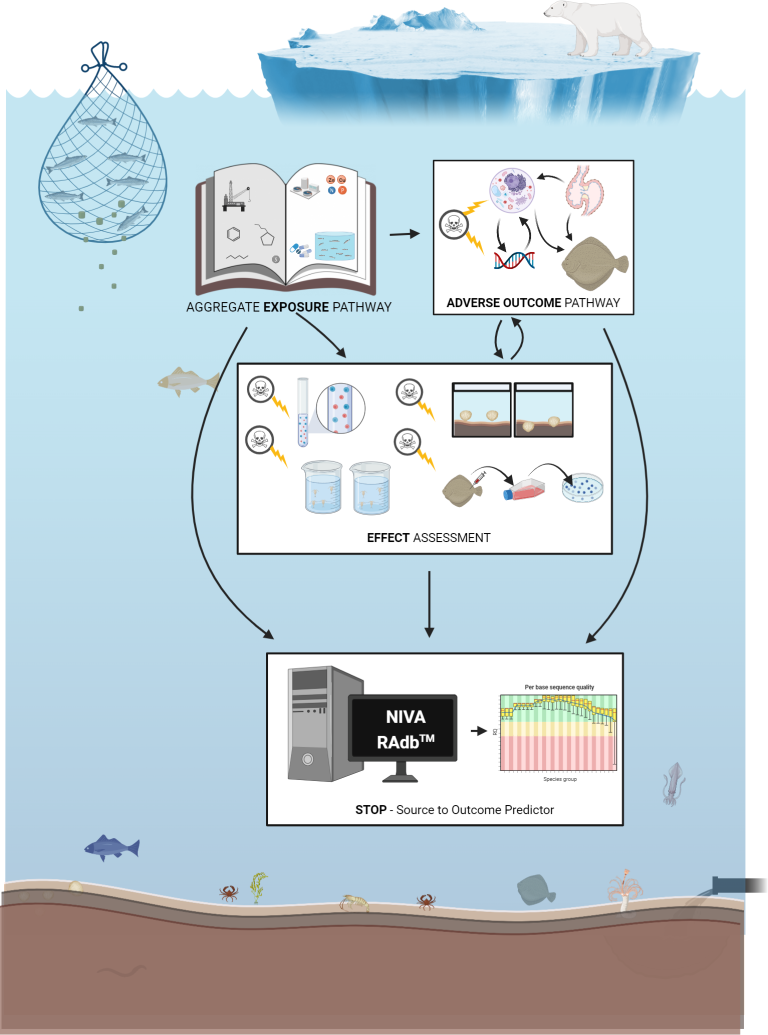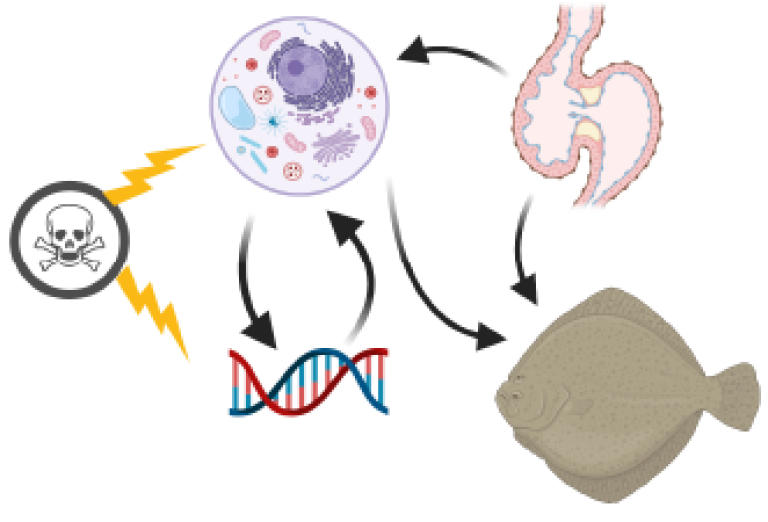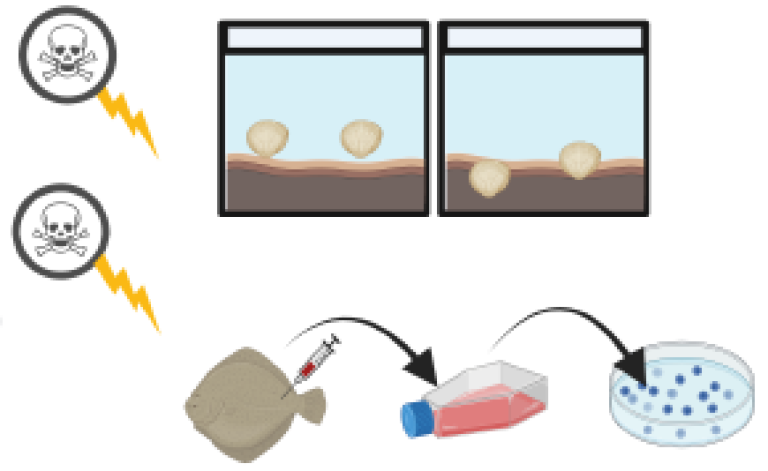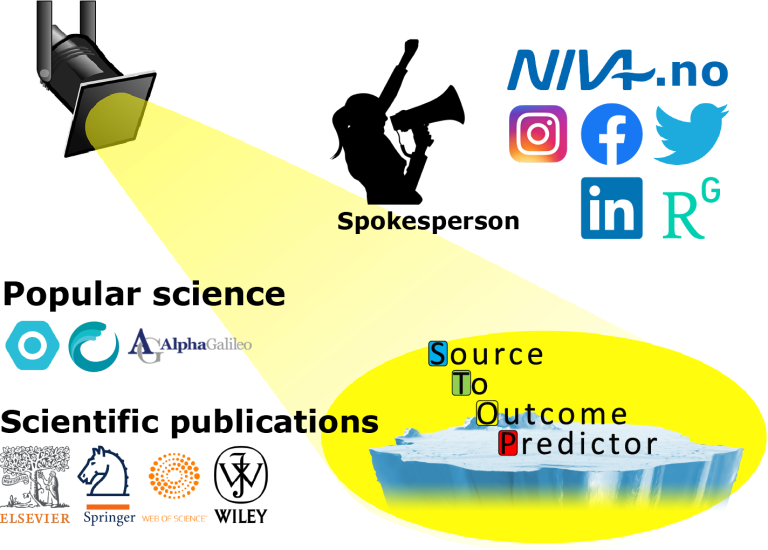EXPECT
The Arctic environment is facing evident changes such as temperature increase and consequent rapid decline in the sea ice. These conditions will favour the development of industrial activities, e.g., oil & gas exploration and aquaculture. We need to assess the potential environmental risks from the anticipated industrial development in the Arctic, and to do that, we need to develop robust methods and approaches that characterise the pollution pathway from the emission to the environment to the display of adverse outcomes in the biota.


About the project
EXPECT will develop computational and experimental approaches to assess organism and population impacts from key Arctic industries, such as aquaculture and oil and gas production, with special focus on establishing causal relationships between pollutant emissions and adverse effects at the organism and population level. This will be achieved by pioneering the development of a Source To Outcome Pathway (STOP) to characterize the causal source-exposure-effect-impact relationships for pollutants and their mixtures. The primary objective is to characterise the most relevant Arctic STOPs and use these to perform Cumulative Risk Assessment (CRA) to support sustainable management of existing and future industrial and anthropogenic activity in the Arctic.
EXPECT is a 5-years project (started in Q3/2021) funded by the Research Council of Norway (project number 315969). The project is led by NIVA, in collaboration with Akvaplan-niva, SINTEF, University of Clemson University (Clemson, US) and University of Newcastle (Newcastle, UK).

How to fulfill our EXPECTations?
EXPECT will address and combine different approaches to identify the main pollutants, toxicity drivers and susceptible organisms related to the Arctic industrial development and perform a STOP-assisted cumulative risk assessment. The work is organized in work packages (WPs):
WP1: Aggregate Exposure Pathways (AEP)

We will assess, organize and quantitate relevant pollutant sources, emissions and fate in the Arctic and assess external and internal exposure for relevant Arctic exposure scenarios.
WP2: Adverse Outcome Pathways (AOP)

We will support the identification of the toxicity pathway of chemicals, from a molecular initiating event until the adverse outcome in Arctic species and populations of these.
WP3: Effect assessment

This will be performed by a combination of novel in vitro and small-scale in vivo methods and effect endpoints in marine microalgae, copepods, scallops and fish of relevance to the Arctic environment.
WP4: STOP-assisted cumulative risk assessment
This will be performed on basis of work in WP1-3. WP4 will assemble and evaluate relevant AEPs and AOPs to propose and quantitate a set of Source To Outcomes Pathways (STOPs) relevant for priority pollutants (or groups thereof) for selected Arctic exposure scenarios. STOP-informed Cumulative Risk Assessments (CRA) will be performed for ecologically-relevant combinations of stressors to identify risk hotspots, susceptible species, stressor-relevant toxicity pathways, regulatory-relevant adverse outcomes and key risk drivers.

WP5: Dissemination and Communication

Last, but not least, EXPECT will demonstrate the utility and applicability of STOP frameworks to assist hazard and risk assessment to support sustainable environmental management. Computational tools such as the Source To Outcome Predictor (STOP) will be developed to facilitate end user-specific interactions.
What can the research and regulatory society EXPECT?
EXPECT is envisioned to bring several beneficial impacts to different society sectors. The project will:
- deliver a novel approach to organise data and create a holistic picture of environmental impact on basis of source, exposure and effect data;
- inform potential end-users about novel and targeted approaches to link exposure to hazard and risk assessments;
- support existing environmental management practices for ensuring sustainable industrial development, and thus impact future management plans, coastal zone planning and eventually improve environmental quality (clean oceans);
- support reduction in animal use in ecotoxicity testing by endorsing larger use of existing scientific data and prediction models;
- contribute to the UN sustainable development goal 14 - life below water, and specifically the goal “By 2025, prevent and significantly reduce marine pollution of all kinds, in particular from land-based activities”;
- support future needs to progress towards ambitions in Europe’s “Green deal” and “Blue growth”.
 Knut Erik Tollefsen
Knut Erik Tollefsen
 Samantha Goncalves Prat
Samantha Goncalves Prat
 Li Xie
Li Xie
 You Song
You Song
 Maria Thérése Hultman
Maria Thérése Hultman
 Tânia Cristina Gomes
Tânia Cristina Gomes
 Sam A. Welch
Sam A. Welch